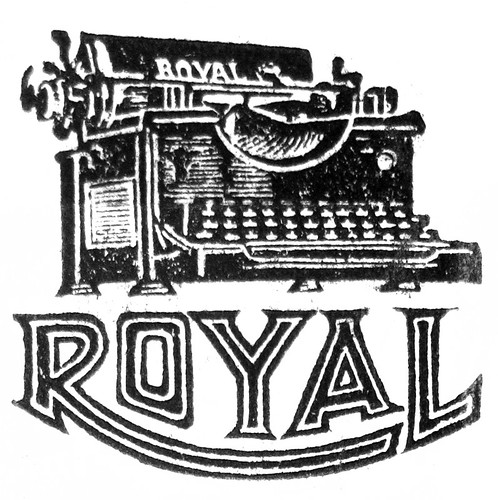
- schyllerwade
- Speed Champion
 Offline
Offline - Registered: 11-6-2017
- Posts: 251
Re: Fine yesterday. Now big problem. Mineral spirits. Typebars...
Yes that seems to be the consensus, that eventually the repeated cleansing of the various mechanics will ultimately free up whatever components aren't moving freely.
Luckily this machine is one that I want to get up and running, so I can't throw in the towel just yet...
- schyllerwade
- Speed Champion
 Offline
Offline - Registered: 11-6-2017
- Posts: 251
Re: Fine yesterday. Now big problem. Mineral spirits. Typebars...
Just an update for all who weighed in on this troubled Kolibri in various threads:
I'm currently in AZ and was able to get my hands on some 100% mineral spirits (startex paint thinner from sherwin Williams) and am currently in the process of flushing out the segment along with the other linkages and pivot points.
I'm hitting it about once every hour or 2 and will update again this evening on progress. I can confirm that this brand mineral spirits is different than all the others I've tried in Los Angeles—odorless, artists grade, green, or otherwise. This stuff smells like gasoline, and it doesn't evaporate nearly as quickly as the other varieties.
So far, things seem to be freeing up nicely. I am optimistic. 🤞
- •
- schyllerwade
- Speed Champion
 Offline
Offline - Registered: 11-6-2017
- Posts: 251
Re: Fine yesterday. Now big problem. Mineral spirits. Typebars...
No improvement.
Back to the drawing board
- •
- beak
- Key Master
 Offline
Offline 
- From: Qld Australia
- Registered: 24-3-2013
- Posts: 929
Re: Fine yesterday. Now big problem. Mineral spirits. Typebars...
I don't like the sound of the white deposit - that suggests some form of bi-metal corrosion to me. You have clearly tried the standard method of cleaning til you are blue in the face, by the sound of it, so I'm first going to suggest that you do something you 'should never do' - i.e. put a little light machine oil into the segment slots. If this frees the action and it stays free for a few days, then you may have rough surfaces caused by corrosion - now temporarily eased by the oil. If there is no notable change, then the oil will simply be removed at your next standard cleaning attempt and no harm done.
The other thing that I suspect is that at some time the thing has been sprayed with WD40 or some other 'lubricant' containing additives which can dry solid over time or otherwise cure unhelpfully - possibly glycerine. Dunk cleaning with detergent may be the only answer to that.
Good luck.
Sincerely,
beak.
- Fleetwing
- Typewriter Talk Vet
 Offline
Offline - From: Hartford, CT USA
- Registered: 30-6-2015
- Posts: 1,022
Re: Fine yesterday. Now big problem. Mineral spirits. Typebars...
I agree with Beak's diagnosis and recommendation.
- TypewriterGuy
- Typewriter Talk Vet
 Offline
Offline 
- From: United States
- Registered: 24-4-2015
- Posts: 1,250
Re: Fine yesterday. Now big problem. Mineral spirits. Typebars...
Same.
I think since we have ruled out grime pretty much, it's the type bar having a light coating of something. I have seen it be rust, and a white sticky film.
At this point, either do the above, OR if you want to totally solve it remove the typebars. Not sure how difficult it is on these...
Back from a long break.
Starting fresh with my favorite typer. A Royal Futura!
- schyllerwade
- Speed Champion
 Offline
Offline - Registered: 11-6-2017
- Posts: 251
Re: Fine yesterday. Now big problem. Mineral spirits. Typebars...
Ok
Well thanks for the input
I am not comfortable disassembling the machine in order to do a dunk cleaning, so I would gravitate towards a light oiling
Something else I noticed during the most recent application, I found that the most stubborn keys improved not when I was dousing the segment with solution, but rather when I applied solution to that other mechanism that is just behind the top row of keys ("behind" when you have the typewriter in front of you) .
I can upload a picture if it's unclear what I'm describing but you can see movement in those slots when you're pressing the keys, so I know there's some sort of connecting pivot point or linkage inside there, but I think it's pretty much impossible to see into. I don't even know if it would be possible if you took the whole machine apart.
- •
- beak
- Key Master
 Offline
Offline 
- From: Qld Australia
- Registered: 24-3-2013
- Posts: 929
Re: Fine yesterday. Now big problem. Mineral spirits. Typebars...
Not sure which parts you mean, other than the typebar linkages, but it would be unusual not to be able to see thse linkages (and to clean them) when you turn the machine over, removing the base if it has one - sorry, I don't have one of these to compare. Perhaps a picture would indeed help.
Sincerely,
beak.
- treefaller
- Touch Typist
 Offline
Offline 
- From: The Dalles, Oregon, USA
- Registered: 24-9-2015
- Posts: 154
Re: Fine yesterday. Now big problem. Mineral spirits. Typebars...
I know Uwe doesn't like this, but I recommend using gun oil in the type segment, and other moving joints. Just don't use petroleum based oil (like 3-n-1) because it'll turn to gum in a few years. Gun oil and sewing machine oil are silicone based and simply evaporate cleanly.
Bangin' around, this dirty old town, typin' for nickels and dimes...
- schyllerwade
- Speed Champion
 Offline
Offline - Registered: 11-6-2017
- Posts: 251
Re: Fine yesterday. Now big problem. Mineral spirits. Typebars...
I actually have some sewing machine oil
I've just never used it because of all the advising against it
And segment aside, I didn't even know which pivot points/linkages Are supposed to be oiled.
As usual I'll post updates but I have anything worth mentioning
- •


